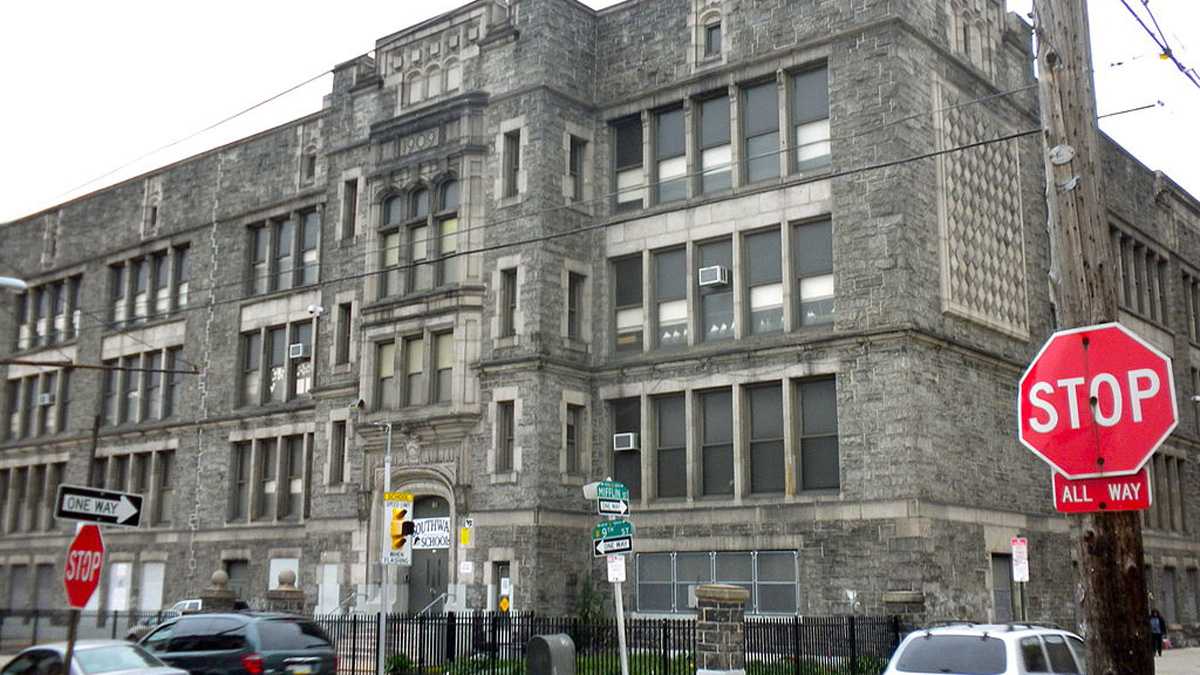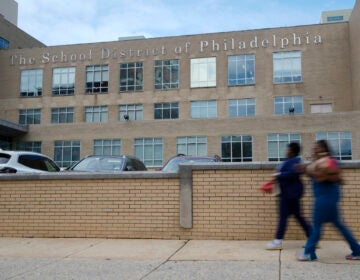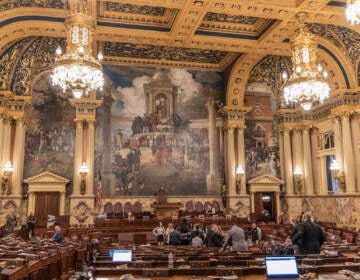One year in, Philadelphia’s community schools turn to tangible improvements
It's been an explosive start for community schools, Mayor Jim Kenney's signature K-12 education initiative.

Southwark School, one of nine designated as community schools in Philadelphia, is in an area of the city that is gentrifying. (Wikipedia.org)
Asked to describe her first year as the community schools coordinator at Southwark School in South Philadelphia, Beth Dougherty laughed.
“Hectic,” she said.
That harried feeling comes partly from being in a K-8 school every day, with its myriad crises and endless activity. Part of it comes from trying to establish and grow the idea that Southwark can be a neighborhood nerve center for community services.
Dougherty, like the eight other coordinators at Philadelphia’s first batch of community schools, spent a lot of the first year planning. She surveyed parents, students, and staff to figure out what kinds of outside resources they’d like. Then she created plans to fill in those gaps. Finally, as the school year closed, she started bringing in new outside partners and better coordinating among those already operating within the school.
“I garden a lot, and it really is that explosion that happens in the middle of the summer where, all of a sudden, you have tomatoes,” said Dougherty. “That’s what it feels like.”
It’s been an explosive start for community schools, Mayor Jim Kenney’s signature K-12 education initiative. Plans originally called for five to seven schools in the first year, with 25 by the time Kenney ends his first term. Instead, the city selected nine schools in the first cohort. All nine released school plans in March that outline their goals for the next two years.
That rapid growth, however, will soon give way to uncertainty.
Like the city’s pre-K expansion, community schools are funded through Philadelphia’s new tax on sweetened beverages. Beverage industry groups have challenged the legality of the tax and lost twice, but the state Supreme Court could still decide to hear an appeal.
Given the unknowns, city officials won’t add new pre-K seats this fall and will select just two new community schools. Those selections will be made in July. The city says it has more than 20 applicants.
That leaves the community schools initiative somewhere between limbo and implementation.
Informal assessments
It’s also difficult to tell — beyond anecdote — how well the program fared in its first school year. Most of the year was dedicated to hiring and planning. Some schools brought in new partners or started new programs, but that wasn’t the focus.
The city is in the middle of selecting an outside partner to evaluate its community schools rollout. That partner will initially measure community engagement and how well schools adhered to the plans they crafted. Eventually, after about two years, evaluators will start to examine indicators such as student attendance to look for signs of tangible improvement.
Further down the road — in the range of three to five years — attention will turn to more traditional academic outcomes. But it could be half a decade before there’s substantial, objective evidence to indicate how well community schools have worked in Philadelphia.
Right now, officials and community schools staffers gauge their progress through more informal means.
Kenney said that people in neighborhoods with community schools “recognize that the city government is engaged now.”
Janelle Harper, the coordinator at South Philadelphia High School, focused her first year on getting staff and students to buy into the concept of community schools. She started with conversations — lots of them.
“I talked to everybody, from crossing guards to teachers to people running businesses in the area,” Harper said.
So far, Harper has introduced a community school closet where needy students can get clothes and food. She wants to integrate more support services for students seeking college and career opportunities and create a yoga room.
While the tangible benefits are just materializing, Harper believes her work so far has at least brought people closer together.
“The climate and the culture of the building changed because people are more inclusive and wanting to help each other,” she said.
It wasn’t always easy, Harper admitted. Sometimes explaining the nebulous concept of community schools felt “like trying to describe what a cloud is.”
But, eventually, she felt she broke through.
“At the end of the school year people understood what I was doing,” Harper said.
WHYY is your source for fact-based, in-depth journalism and information. As a nonprofit organization, we rely on financial support from readers like you. Please give today.





